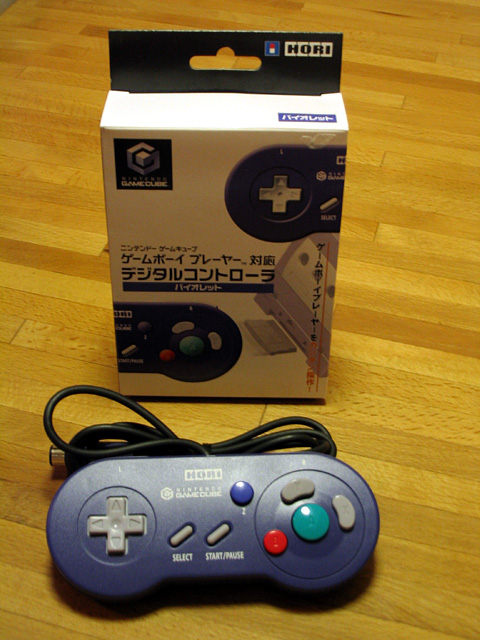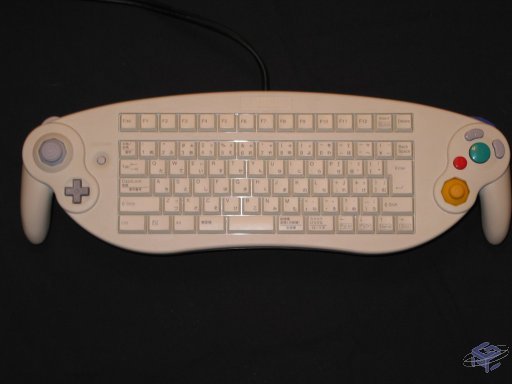Although it pains me to say this, the Gamecube's homebrew community is currently very small, and was never all that big to begin with. Most developers flocked to the original Xbox for its hard drive and similarities to the Windows operating system, the PS2 for its wider exposure, and the Dreamcast for its ease of programming. The Gamecube never really got its chance to shine in the world of independent development. That isn't to say that there is no homebrew available for the system; just considerably less. Regardless, let's take a look through the best that Nintendo's box of joy has to offer.
CubeDoom/QuakeGC/Wolfenstein 3D Gamecube
This one is exactly what it sounds like. A group of talented developers went forth and ported 3 of the most famous First-Person Shooters ever released on the PC, to the humble Gamecube. note that one needs the data files from each game to play past the freeware levels included. For anyone who loved these games, but was never very fond of the computer version's control setup, or was always disgusted by the lackluster console ports of previous generations, I would definitely recommend looking into these ports, as the Gamecube's extra power doesn't just run the games, it emulates them. However, some of these ports have problems that the developers haven't yet fixed. For example, sound only sometimes works in the Wolfenstein port, and networking is not yet implemented in CubeDoom. There doesn't seem to be anything wrong with the Quake port, though. I commend the developers for their valiant effort, but there is still work to be done on these ports to make them better. But, if you're looking for some retro FPS action on your Gamecube, then you aren't going to find anything much better than this.

Emulators
Here's where the Gamecube really shines. The system has had some great and powerful emulators made for it, emulating systems all the way up to the Nintendo 64! The 'Cube has all of your standard emulators such as NES, SNES, Genesis, Game Boy, etc., but it also has emulators for the TurboGrafx-16, Sega Master System, PS1, Neo-Geo Pocket Color, Atari 2600, and of course, the Nintendo 64. [There are even rumors about a Dreamcast emulator in the works for the Gamecube and Wii; something I will definitely keep an eye on!] The Gamecube is able to emulate all of these systems with ease, even powering through some of the more graphically-intensive games like Diddy Kong Racing and Perfect Dark with few errors. The PSX emulator is just as impressive, and like most emulators for the Gamecube, is still undergoing active development, due to them being released simultaneously on the GC and Wii. It seems that as long as Wii emulation is alive, so will be Gamecube emulation. As you can expect, almost all the games for consoles before the PS1/N64 work flawlessly in their respective emulators, so I will mainly focus on the latter. I was able to play quite a few games on the N64 emulator with no errors at all. It was smooth, accurate, looked great, and it was much better to play with a Gamecube controller. The PS1 emulator still needs some work, but it definitely gets the job done. There's also something so very right about playing Final Fantasy VII on a Nintendo system, if you know what I mean! The Gamecube is a fine platform for emulators, easily outclassing the PS2's confusing programs. Go and play a few emulators on your 'Cube today, and prepare to be amazed. Here's a video of the latest N64 emulator for the Gamecube. Yes, the title says it is for the Wii, but they are released simultaneously on both platforms, and they play mostly the same.
SuperTux
One of the most famous games on the Linux operating system has received a stunning port to the Gamecube. You play as Tux, the penguin Linux mascot, and try to make your way through the vast land of Antarctica. The gameplay is very similar to Super Mario Bros. In fact, intentionally so. You could even say it was a clone of SMB. But, that doesn't mean it is a bad game; not at all. The levels are plentiful and give you a good challenge, while still not being overwhelming. You could easily sink a few hours into this game if you wanted to. As one of the best homebrew platformers available, SuperTux is something to defend yourself with against the accusation that there are no good homebrew games on the Gamecube. Play it as soon as you can; it is some serious platforming fun.

There are a couple ways to run Gamecube homebrew. The first one to see the light of day was the PSOload method, which uses an exploit in Phantasy Star Online Episodes I & II to run unsigned code. You can find more info about this in the bibliography of this post. However, this method was fixed in the updated version, Phantasy Star Online Episodes I & II Plus. You can also load and play entire Gamecube disc images through this method. the more popular method is the SD card method, where you use an exploit in the Gamecube Action Replay cheat software to make your own code that starts a homebrew loader. You need an SD card, a Gamecube SD card adapter, and a copy of Action Replay for the Gamecube to do this one. The last method is the most straightforward, but requires the most work. If you modify your Gamecube with a modchip, then you can burn homebrew and emulators to a disc. This is good for people who were already going to modify their Gamecube, and don't have any spare SD cards.
Well, that's really the cream of the crop for Gamecube homebrew, as far as I know [I would love to be proved wrong, though!], but it is certainly enough to get new Gamecube owners something to start out with, and most notably, to show the emulation capabilities of the system. I also want to give a shout-out to Gamecube/Game Boy Player fantatic and all-around cool guy, noiseredux of Racketboy Forums, who told me about some cool Gamecube homebrew programs that I missed initially. I have included a link to his blog in the bibliography. Have fun with the games from generations past with emulation!
Bibliography of Links:
Gamecube Homebrew/Emulators: http://gcemu.dcemu.co.uk/
PSOload Tutorial: http://www.eurasia.nu/wiki/index.php/GameCubePsoUploadTutorial
SDload Tutorial: http://www.gc-linux.org/wiki/SDload
Noiseredux's Blog: http://www.rfgeneration.com/blogs/noiseredux
This is lisalover1, and get off my lawn!


















